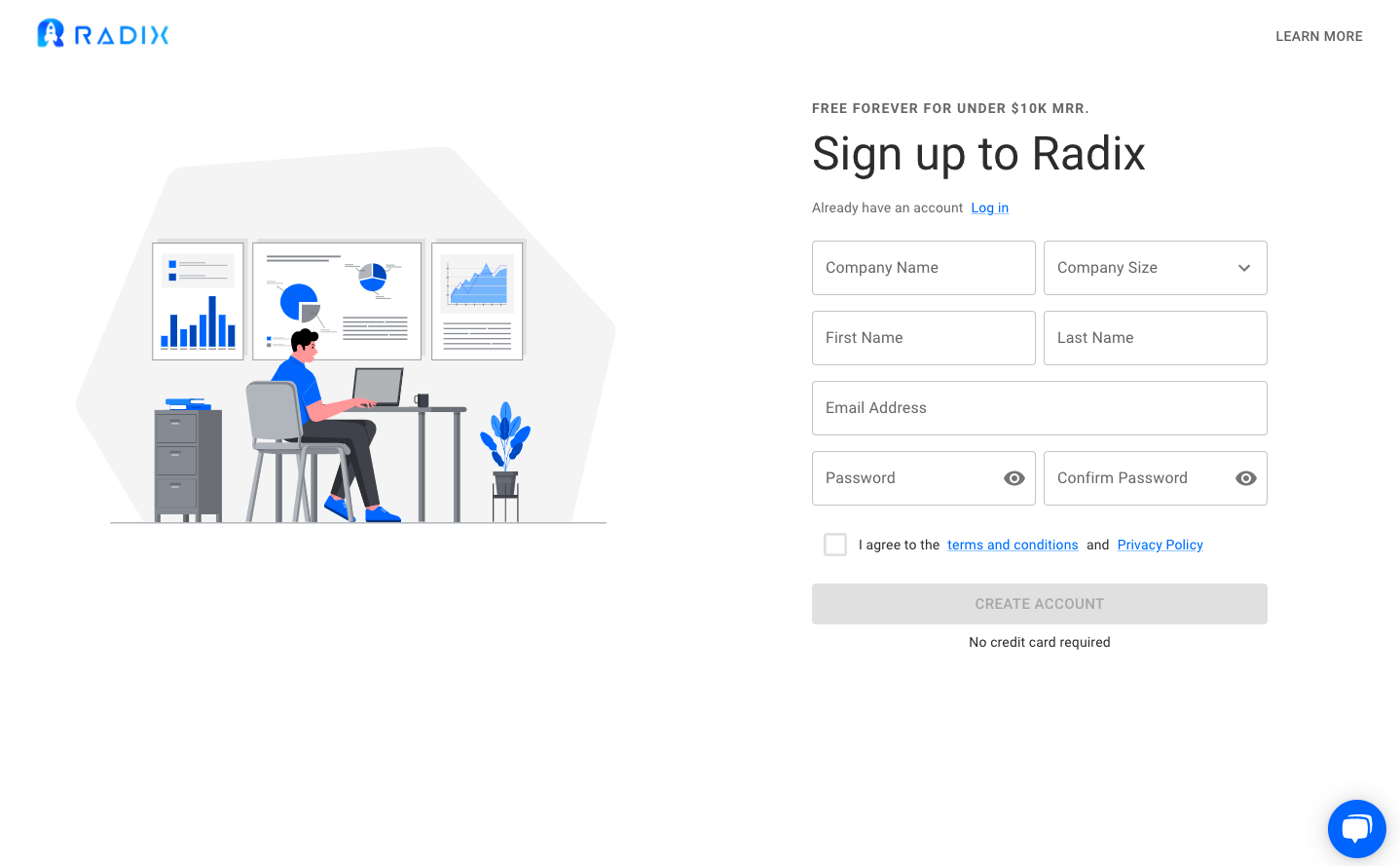Adoption vs. engagement metrics: how do they differ or overlap?
Customer engagement and product adoption are not the same things. As a result, the metrics used to track adoption and engagement should be different.
Customers must remain engaged with your product for your SaaS business to generate revenue. Engagement on its own, however, is not enough. Your customers must be aware of all current and new features that are relevant to them and must adopt them as they progress through the customer journey.
So, let’s take a look at what adoption and engagement metrics are and how you may enhance them.
What exactly is SaaS product adoption?
The user path from the first interest in your product to active and valuable use is described as product adoption.
When a user begins to utilize your product to achieve his goals, it is said to have been “adopted.”
You must assure customer success for them to become loyal, long-term users, and, ideally, promoters.
What are the most important product adoption metrics?
You can’t have a solid product adoption strategy unless you track the correct metrics to track various components of adoption.
The following are the product adoption Metrics that differentiate adoption from engagement.
- Feature adoption rate
- User activation rate
- Time to value
Feature adoption rate
Customers adopt more and more features relevant to their use case as they progress through the adoption path.
You can calculate the feature adoption rate by dividing the number of monthly active users of a feature by the number of user logins in a given time and multiplying the result by 100.
Tracking the feature adoption rate, in conjunction with other feature adoption statistics, helps you in making informed decisions regarding your product adoption strategy.
As a result, you may create a collection of experiences that will help users along the journey.
User activation rate
Activation happens when new users do specified critical activities within your product that allow them to experience its value. The percentage of users who reach the activation point is given by the user activation rate.
To begin, you must specify the in-app activities that users must do in order to benefit from the product and activate it. Then, count how many times these events were executed by users in a specific time period.
Divide the number of users who achieved the activation point/milestone by the number of users who signed up to get the activation rate, then multiply the ratio by 100.
The activation rate varies depending on the type of product, making it difficult to establish an activation benchmark.
This is because activation events vary amongst companies, products, use cases, and user personas.
Time to Value
The time it takes a user to realize the promised value of your product = time to value.
It counts the amount of time it takes a user to experience the value and reach the activation point. As a result, shortening the time to value is crucial to ensuring that users find value as quickly as possible.
Because users are having trouble experiencing value, a prolonged TTV is likely to result in poor trial conversion rates.
Users will not progress in their product adoption journey as a result of this.
A quick time to value, on the other hand, implies that there is less friction in the journey, making it easier and faster to discover value. The higher the customer success and the lower the churn, the shorter the TTV.
What exactly is SaaS user engagement?
The quality and regularity with which your customers with your product is referred to as user engagement.
It represents your customers’ relationship with your brand. The level of user engagement varies depending on the type of business and product. User engagement varies depending on the stage of the user journey a user is in for SaaS enterprises.
As customers progress through the journey shows that they are having significant experiences with your product, which keeps them interested and loyal.
What are the most important user engagement metrics?
User engagement metrics are data points that you can measure based on user interactions.
Observing user activity through a product analytics tool like Radix may help you detect trends in engagement.
So, these are the essential user engagement metrics to monitor:
- Product stickiness
- Customer engagement score
- Customer churn rate
Product stickiness
Customers will stay with you for as long as they are engaged with your service.
The product stickiness ratio can be used to determine this.
Simply divide the number of daily active users (DAUs) by the number of monthly active users to get the number (MAUs).
The overall number of logins will not provide much insight into DAUs and MAUs because many users may become annoyed by anything after logging in and then abandoning the software.
As a result, you should consider whether users interact with the software’s primary features and how much time they spend on average.
The overall goal should be to maintain a stickiness ratio of one, which means that everyone is an engaged user who receives value all day, every day.
In contrast, for a sophisticated product, a ratio as low as 0.4 may be acceptable because customers may not want to interact every day.
Customer Engagement Score
The customer engagement score (CES) indicates how enthusiastic your free trial prospects and paying customers are about your offering.
The higher the score, the more satisfied and engaged the users are.
To begin, you must identify particular engagement events to measure, such as important features customers engage with (or do not engage with) and frequency of product usage.
The events you choose should be related to the nature of your product.
Then, on a scale of 1-10, assign an engagement score to each event based on its value to your product and user personas.
Multiply this score by the number of times the event occurred in the last x days to get the overall event value.
You may also monitor feature engagement to go further into user interaction and focus on particular issues affecting overall product adoption.
Customer Churn Rate
Disengaged customers are the most likely to churn, therefore tracking and reducing churn is critical.
It’s difficult to achieve 0% churn, but you may reduce it to the point where your revenue surpasses the amount you lose due to cancellations.
The percentage of users that abandon your product over a given period = customer churn rate.
It is calculated by dividing the number of customers lost throughout the time by the number of customers at the start of the term and multiplying the result by 100.
Churn is the inverse of retention. The lower your churn rate, the more existing customers you will keep. Boosting your retention rate by 5% may increase your profitability by up to 95%
What’s the difference between engagement and adoption metrics?
While measuring engagement and adoption are comparable, the latter provides the proportion of critical features that your customers use.
Customers might be extremely engaged by utilizing only a few features, but adoption metrics tell you how many distinct features are being used.
Adoption may occur as a result of engagement. Users are more inclined to subscribe to your business and embrace your product when they interact with it more and find its features beneficial.
Product Adoption Recommendations
Let’s look at how you can persuade more of your users to use your product.
Here are two pointers:
- To increase user adoption, employ interactive walkthroughs.
- Provide in-app self-service support to assist users in reaching activation points as efficiently as possible.
Interactive walkthroughs are effective tools for onboarding new users.
The initial activation will not force your users to utilize all of your product’s functions.
This is where secondary onboarding comes in to help your users become acquainted with key secondary features and boost adoption.
Unlike product tours, which provide too much information in one session, interactive walkthroughs keep consumers’ interest by encouraging them to learn by doing.
You may provide walkthroughs contextually, whether for a new or old feature so that users can educate themselves on the feature when they need it.
Provide in-app self-service support and assist users in reaching activation points as efficiently as possible.
In-app self-service support enables users to address their problems, particularly those that arise regularly. As a result, they do not have to wait for your support team to become available.
Self-service support provides customers with some control over their experiences, creating a sense of accomplishment and autonomy.Users are less likely to become irritated when learning how to utilize your product and achieve activation points.
Users may swiftly conduct all of the tasks required to locate value and activate as the resolution time lowers.
User Engagement Recommendations
Let’s talk about how your customer success team can make your product more appealing to customers.
- Personalize the onboarding experience by using welcome screens.
- Use Gamification to boost user engagement.
Personalize the onboarding experience by using welcome screens
Right after they sign up for your product, greet each user with a tailored onboarding experience. However, welcome displays aren’t simply for welcoming.
Welcome screens assist you in making a positive first impression by not only introducing your product but also creating the appropriate expectations.
Use Gamification to boost user engagement
A “reward” is used as an incentive to promote more particular desirable behaviors in a gamification technique. These incentives make the product experience more enjoyable, competitive, and, as a result, engaging.
The following are the most commonly utilized gamification elements:
- Leaderboards
- Points
- Badges
- Elements of rivalry among users.
- Discount coupons
Furthermore, gamification reminds users regularly how much closer they are to achieving their goals, which acts as a motivation to keep going.
Users can freely choose to engage without fear of being punished for failing to complete a task.
Conclusion
The data has spoken and it is clear. Adoption and engagement metrics each have their place in the world of marketing and analytics. Both provide insights into how your users interact with your product and how you can better assist those users, but critically analyzing the difference between the two and the effect each may have on your organization will allow you to pinpoint which metric is more beneficial to your overall success.
You can sign up to Radix to track & analyze these key metrics

Read More:
How to Win Back Your Lost Trial Leads
Best Practices to Improve SaaS Onboarding
Trial User Onboarding Methods in SaaS
8 Strategies to Increase your Free Trial Conversion Rate
How to Effectively Convert Free Trial Users into Paying Customers in SaaS?






